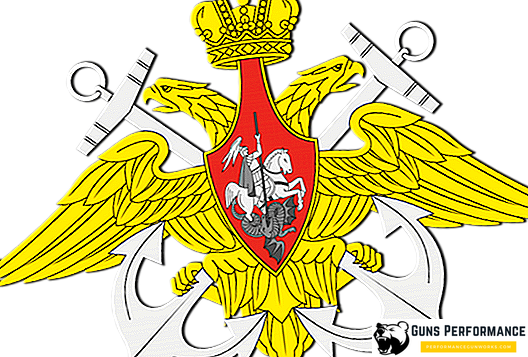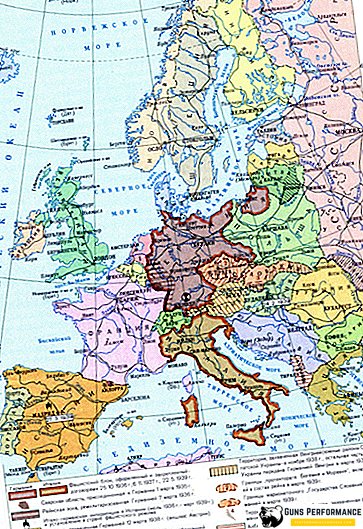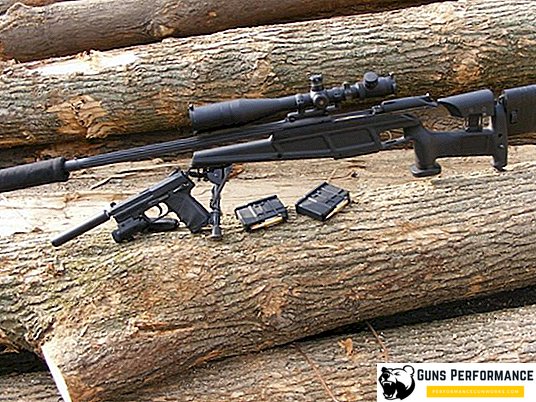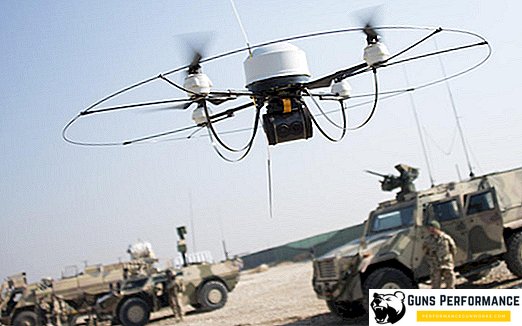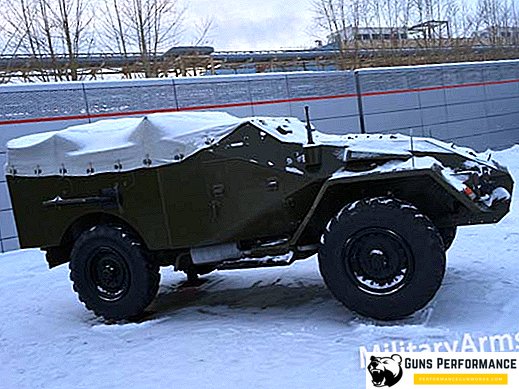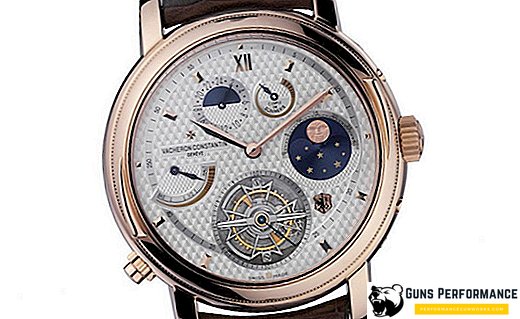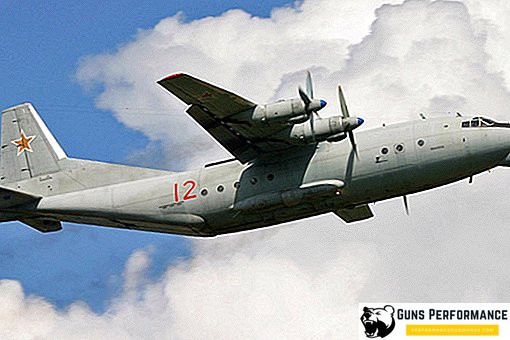The Workers 'and Peasants' Red Army was the name of the Ground Forces of the young Soviet state from 1918–1922 until 1946. The Red Army was created from almost nothing. Its prototype was the detachments of the Red Guards, which were formed after the February 1917 coup, and the units of the tsarist army sided with the revolutionaries. Regardless, she was able to become a formidable force and won in the years of the civil war.
A guarantee of success in the construction of the Red Army was the use of the combat experience of the old pre-revolutionary army personnel. Massively in the ranks of the Red Army began to be called up by the so-called military experts, namely officers and generals who served "the king and the fatherland." Their total number during the civil war in the Red Army, there were up to fifty thousand people.
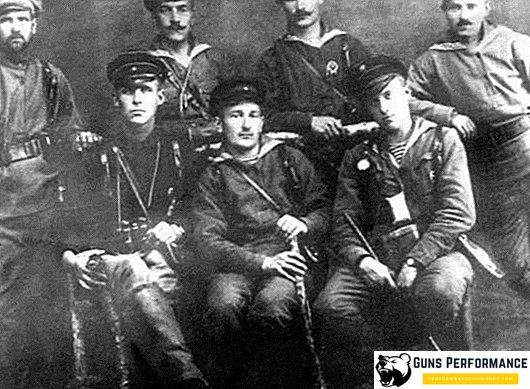
The beginning of the formation of the Red Army
In January 1918 the decree of the Council of People's Commissars "On the Red Army" was published, in which it was noted that all citizens of the new Republic who were not under the age of eighteen could join its ranks. The release date of this resolution can be considered the beginning of the formation of the Red Army.
Organizational structure, composition of the Red Army
At first, the main unit of the Red Army was made up of separate detachments, which were military units with independent farms. The head of the detachments were the Soviets, which included one military leader and two military commissioners. When they were small headquarters and inspectorates.
When military experience was gained with the involvement of military experts, in the ranks of the Red Army began to form full-fledged units, units, formations (brigades, divisions, corps), institutions and establishments.
Organizationally, the Red Army corresponded to its class characteristics and military needs of the beginning of the past century. The structure of the combined forces of the Red Army consisted of:
- Rifle corps, in which there were two or four divisions;
- Divisions, in which there were three rifle regiments, an artillery regiment and a technical unit;
- A regiment with three battalions, an artillery division and technical units;
- Cavalry corps with two cavalry divisions;
- Cavalry division with 4-6 regiments, artillery, armor units, technical units.
Red Army uniforms

The Red Guards did not have any established rules of uniform. It differed only in a red armband or a red ribbon on headdresses, and individual detachments - with Red Guard breastplates. At the beginning of the formation of the Red Army allowed to wear old uniforms without insignia or arbitrary uniforms, as well as civilian clothes.
Since 1919, British and American service jackets have been very popular. Commanders, commissioners and political workers had their own preferences; they could be seen in leather caps and jackets. The cavalrymen gave preference to hussar trousers (chakchiras) and dolomans, as well as to lancer jackets.
In the early Red Army, officers were rejected as a "relic of tsarism." The use of this word was forbidden and was replaced by the “commander”. At the same time the epaulets and military ranks were abolished. Their names were replaced by posts, in particular, "komdivami" or "komkory".
In January 1919, Tabel, describing the insignia, was introduced; in it, eleven insignia were installed for the command personnel from the detachment commander to the front commander. The report card determined the wearing of signs, the material for which was a red instrument cloth, on the left sleeve.
The presence of a red star as a symbol of the Red Army

The first official emblem, indicating the identity of the soldier to the Red Army, was introduced in 1918 and was a wreath of laurel and oak branches. Inside the wreath they placed a red star, as well as a plow and a hammer in the center. In the same year, hats began to be decorated with icons with cockades with a red enameled five-pointed star with a plow and a hammer in the center.
The composition of the worker-peasant red army
RKKA rifle troops
Rifle troops were considered the main branch of the troops, the main backbone of the Red Army. In 1920, it was the infantry regiments that constituted the largest number of soldiers of the Red Army, later separate rifle corps of the Red Army were organized. They consisted of: infantry battalions, regimental artillery, small units (communications, engineering and other), and the headquarters of the Red Army regiment. Rifle battalions included rifle and machine-gun companies, battalion artillery and the headquarters of the Red Army battalion. Rifle companies included rifle and machine-gun platoons. Shooting platoon included offices. The branch was considered the smallest organizational unit in the infantry. The armament in the department were rifles, light machine guns, hand grenades and a grenade launcher.
Artillery of the Red Army
Also among the Red Army were artillery regiments. They included artillery divisions and the headquarters of the Red Army regiment. The Artdivision included batteries and battalion control. In the battery - platoons. The platoon consisted of 4 guns. It is also known about the artillery corps on the breakthrough. They were part of the artillery, part of the reserves, which led the Supreme Command.
Cavalry of the Red Army

The main units in the cavalry were cavalry regiments. The regiments included saber and machine-gun squadrons, regimental artillery, technical units and the headquarters of the Red Army cavalry. Saber and machine gun squadrons included platoons. Platoons were built from the offices. Cavalry units began to organize with the Red Army in 1918. From the disbanded parts of the former army, only three cavalry regiments were received in the Red Army.
Armored troops of the Red Army
Tanks of the Red Army, manufactured at KhPZ
From the 1920s in the Soviet Union began to produce their own tanks. At the same time laid the concept for the combat use of troops. Later, the charter of the Red Army highlighted the combat use of tanks, as well as their interaction with the infantry. In particular, the second part of the statute approved the most important conditions for success:
- The sudden appearance of tanks along with the attacking infantry, simultaneous and massive use over a wide area in order to disperse the enemy's artillery and other anti-armor weapons;
- The use of the separation of tanks in depth with the synchronous formation of a reserve of them, which will allow to develop attacks at great depths;
- close interaction of tanks with infantry, which consolidates the points occupied by them.
There were two configurations for the use of tanks in battle:
- To directly support the infantry;
- Being a leading echelon, operating without a fire and visual connection with it.
The armored troops had tank units and formations, as well as units that were armed with armored cars. The main tactical units were tank battalions. They included tank companies. Tank companies included tank platoons. The tank platoon had five tanks. The armored car company included platoons. The platoon included three to five armored vehicles.

The first tank brigade was created in 1935 as a reserve of the Commander-in-Chief, and already in 1940, on its basis, a Red Army tank division was formed. The same compounds were part of the mechanized corps.
Air Force (Red Army Air Force)
The Red Army Air Force was formed in 1918. They included separate air units and were in the county offices of the air fleet. Later they were reformed, and they became front-line and army field directorates of aviation and aeronautics at the front-line and combined-arms army headquarters. Such reforms took place constantly.
From 1938-1939-ies aviation in the military districts was transferred from the brigade to the regimental and divisional organizational structures. The main tactical units were aviation regiments in the amount of 60 aircraft. The activity of the Red Army Air Force was based on delivering fast and powerful air strikes at large distances to the enemies, which were not accessible to other combat arms. The aircraft were armed with high-explosive, fragmentation and incendiary bombs, cannons and machine guns.

The main units of the Air Force were aviation regiments. The regiments included air squadrons. The squadron included links. In the links were 4-5 aircraft.
Before the Second World War, aviation in military districts included separate bomber, fighter, mixed (assault) aviation divisions and separate reconnaissance aviation regiments. From the autumn of 1942, there were 32 airplanes in all aviation branches in the aviation regiments. However, since the summer of 1943, the number of airplanes that were in the assault and fighter aviation regiments increased to forty units.
Engineering troops of the Red Army
As part of the divisions it was assumed to have one engineering battalion, in each rifle brigade - for the sapper company. Since 1919, the formation of special engineering parts. Since 1921, the leadership of the troops was taken by the Main Military Engineering Directorate. Since 1929, the appearance of engineering units was prescribed in the staff of all the armed forces.
When the Great Patriotic War began in October of the same year, a new post was established: Chief of the Engineering Troops. In the intervals between battles by engineering troops, a wide variety of engineering structures were built. The fighters of the engineering troops were engaged in various fortifications, creating barriers, mining the area, ensuring the conduct of military maneuvers, making passes through the minefields of the enemy, ensuring the overcoming of its engineering and technical barriers, forcing water obstacles, took an active part in assault activities of fortifications in cities, etc.

Himvoyska Red Army
The formation of chemical troops in the Red Army began in 1918. In the autumn of the same year, the Republican Revolutionary Military Council issued Order No. 220, according to which the Chemical Service of the Red Army was created. By the 1920s, all rifle and cavalry divisions and brigades had acquired chemical units. From 1923 rifle regiments began to be supplemented by anti-gas teams. Thus, chemical units could be encountered in all branches of the military.
Throughout the Great Patriotic War, the chemical troops possessed:
- Technical teams (to install smoke screens, as well as to disguise large or important objects);
- Brigades, battalions and companies for chemical protection;
- Flamethrower battalions and companies;
- Bases;
- Warehouses, etc.
Communications troops of the Red Army
The mention of the first divisions and communications units in the Red Army dates back to 1918, when they were formed. In October 1919, the Communications Forces were given the right to be independent special forces. In 1941, a new post was introduced - the Head of the Communications Forces.
Automobile troops of the Red Army
The automobile troops of the Red Army were an integral part of the Logistics of the Armed Forces of the Soviet Union. They were formed in the Civil War.

Railway troops of the Red Army
Railway troops of the Red Army were also part of the Soviet Armed Forces Logistics. They also formed in the Civil War. Mainly Railroad troops laid the route of communications, bridges were built.
Road Troops of the Red Army
The road troops of the Red Army were also part of the rear of the Armed Forces of the Soviet Union. They also formed in the Civil War.
By 1943, Road Troops possessed:
- 294 separate road battalions;
- 22 offices of military roads, in which there were 110 road and commandant sections;
- 7 military road departments, in which there were 40 road units;
- 194 transport companies;
- Repair bases;
- Bases for the production of bridge-road devices;
- Educational and other institutions.
The system of military training, training of the Red Army
Military education in the Red Army, as a rule, was divided into three levels. The basis of higher military education consisted of a well-developed network of higher military schools. All students in them bore the title of cadets. Duration of training ranged from four to five years. Graduates mainly received military ranks of lieutenants or junior lieutenants, which corresponded to the first positions of "platoon commanders".

In the period of peacetime, the program of training in military schools provided for obtaining higher education. But in the period of war, it was reduced to the medium-special. The same thing happened with the terms of study. They rapidly declined, and then there was the organization of short-term semi-annual team courses.
A feature of the military education of the Soviet Union was the presence of a system in which there were military academies. Training in such an academy provided higher military education, while the academies of western states trained junior officers.
Service of the Red Army: personnel
In each of the Red Army divisions, a political commissioner was appointed, or so-called political leaders (political instructors), who had almost unlimited powers, which reflected the RKKA Charter. In those years, political instructors could easily cancel at their discretion the orders they did not like, the commanders of subunits and units. Such measures were issued as necessary.

Armament and military equipment of the Red Army
The formation of the Red Army corresponded to the general trends of military-technical development throughout the world, including:
- Formed tank troops and air force;
- The mechanization of infantry units and their reorganization as motorized rifle troops;
- Disbanded cavalry;
- Emerging nuclear weapons.
The total number of the Red Army in different periods
Official statistics provide the following data of the total number of the Red Army at different times:
- From April to September 1918 - almost 200,000 w / sr-x;
- In September 1919 - 3 million w / sr-x;
- In the autumn of 1920 - 5 500 000 w / sr-x;
- In January 1925 - 562 000 w / sr-x;
- In March 1932 - more than 600,000 w / sr-x;
- In January 1937 - more than 1 500 000 w / sr-x;
- In February 1939 - more than 1 900 000 w / sr-x;
- In September 1939 - more than 5,000,000 w / sr-x;
- In June 1940 - more than 4 million w / sr-x;
- In June 1941 - more than 5,000,000 w / sr-x;
- In July 1941 - more than 10 000 000 w / sr-x;
- Summer 1942 - more than 11 million w / sr-x;
- In January 1945 - more than 11,300,000 w / sr-x;
- In February 1946, more than 5 million w / sr-x.
Red Army losses
There are different data in the casualties of the USSR in the Second World War. The official loss figures of the Red Army changed many times.
According to the Russian Ministry of Defense, the irretrievable losses in the battles on the territory of the Soviet-German front were more than 8,800,000 Red Army soldiers and their commanders. Such information came from declassified sources in 1993, according to data obtained from prospecting works, as well as from archival data.

Repression in the Red Army
Some historians believe that if there were no pre-war repressions against the commanding officers of the Red Army, it is possible that history, including World War II, could have been otherwise.
During the 1937-1938-ies of the commanders of the Red Army and the Navy were executed:
- Combrig and equivalent to them from 887 - 478;
- Divisional divisions and equivalent to them from 352 - 293;
- Komkory and equated to them - 115;
- Marshals and commanders - 46.
In addition, many commanders simply died in prison, unable to endure the torture, many of them ended up living by suicide.
Subsequently, each military district was subjected to a shift of 2-3 or more commanders, mainly due to arrests. At times more repressed their deputies. On average, 75% of senior military personnel had little (up to a year) experience serving in their posts, while lower units had even less experience.
The results of the repressions by the German military attache, General E. Koestring, in August 1938, were reported to Berlin, which indicated something like the following.

Due to the elimination of many senior officers who have been improving their professionalism for dozens of years with practical and theoretical studies, the Red Army was paralyzed by its operational capabilities.
The lack of experienced officers negatively affected the training of troops. There was a fear of making decisions, which also had a negative effect.
Thus, due to the mass repressions of the 1937-1939s, by 1941 the Red Army approached completely unprepared. She had to go through the "school of severe blows" directly during the conduct of hostilities. However, the acquisition of such an experience was worth millions of human lives.


